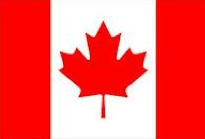 15 May 2015: The Government of Canada has submitted its intended nationally determined contribution (INDC) to the UNFCCC Secretariat. Canada intends to reduce greenhouse gas (GHG) emissions economy-wide by 30% below 2005 levels by 2030. Canada is the 38th party to formally submit an INDC.
15 May 2015: The Government of Canada has submitted its intended nationally determined contribution (INDC) to the UNFCCC Secretariat. Canada intends to reduce greenhouse gas (GHG) emissions economy-wide by 30% below 2005 levels by 2030. Canada is the 38th party to formally submit an INDC.
According to the submission, Canada’s INDC covers seven gases: carbon dioxide (CO2), methane (CH4); nitrous oxide (N2O); sulphur hexafluoride (SF6); perfluorocarbons (PFCs); hydrofluorocarbons (HFCs); and nitrogen trifluoride (NF3). The Government states that it can implement the target through legislative instruments already in place, as well as through policy actions. It adds that it has already been taking regulatory action sector-by-sector since 2006.
The INDC elaborates on measures taken in its two largest emitting sectors, transportation and electricity. It also notes that mechanisms are in place to engage with the Canadian provinces and territories, which have significant authority over their natural resources, energy and environment. On international carbon credits, the INDC states that “Canada may use international mechanisms to achieve its 2030 target, subject to robust systems that deliver real and verified emissions reductions.”
All parties to the UNFCCC are expected to submit INDCs in advance of the Paris Climate Change Conference, which will take place in December 2015. Those submitted by 1 October 2015 will be included in a synthesis report on their aggregate effect by 1 November 2015. Parties are anticipated to agree on a global climate change agreement to take effect in 2020 at the Paris Climate Change Conference. [UNFCCC Press Release] [Canada’s INDC] [UNFCCC INDC Portal]